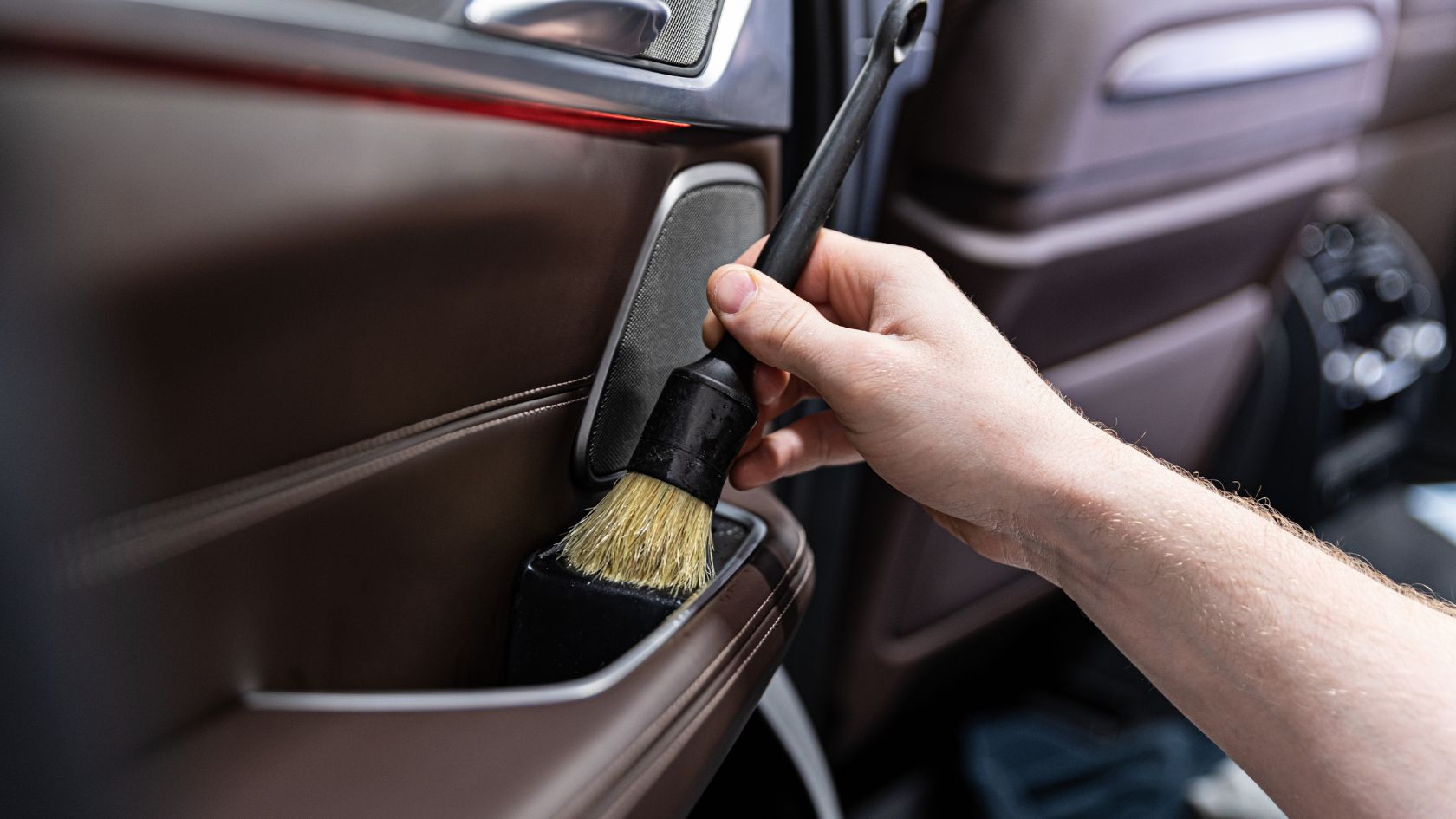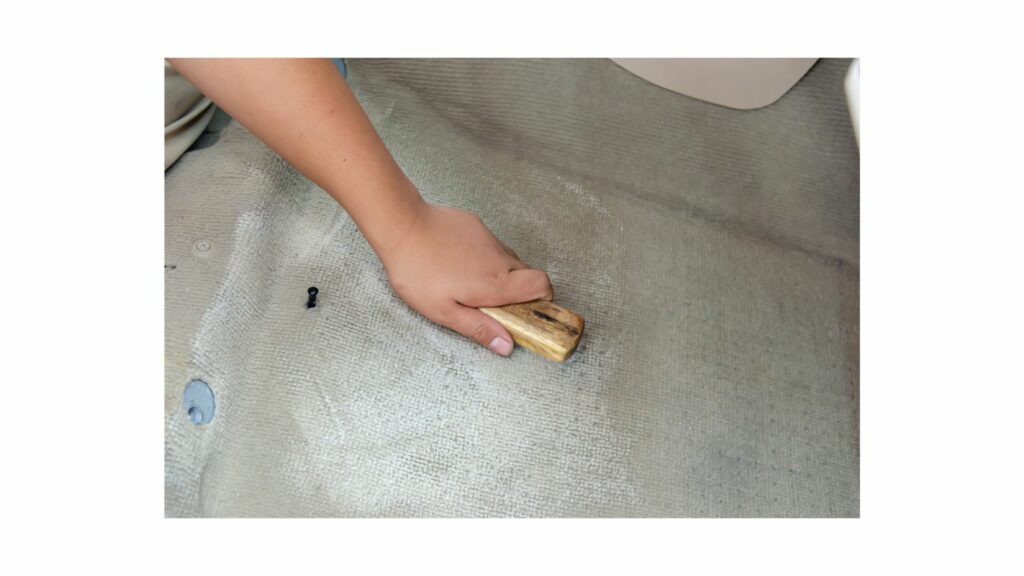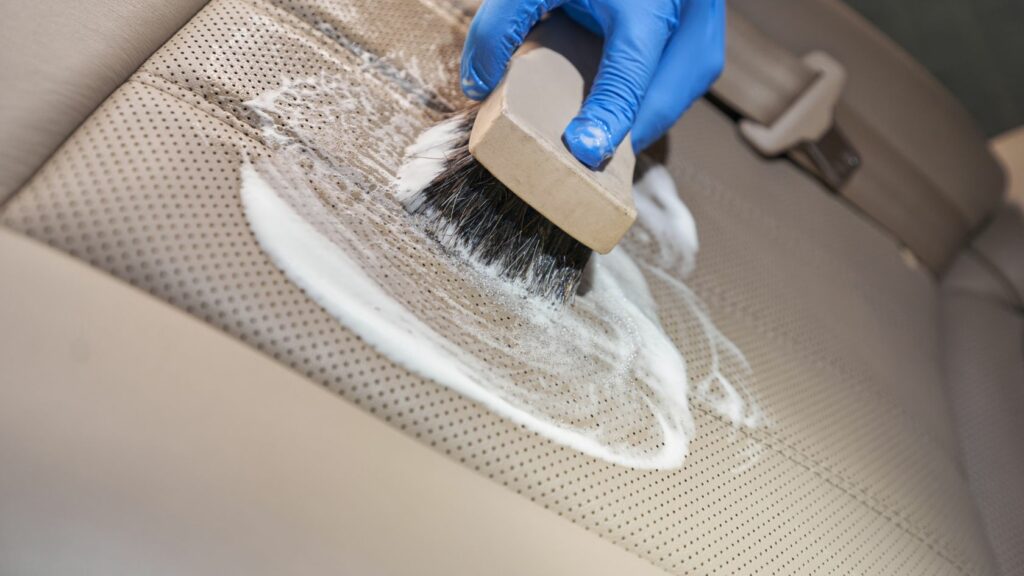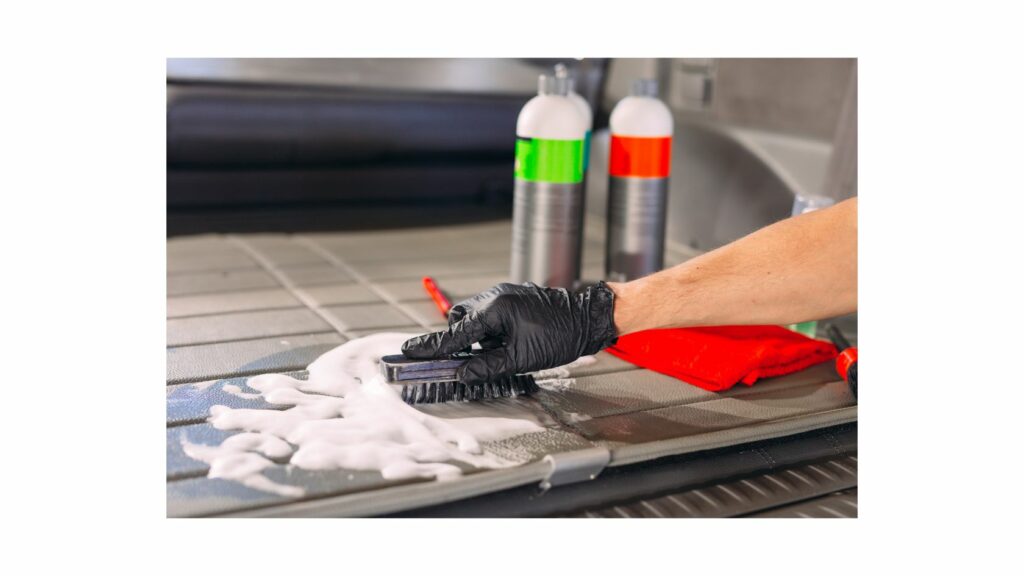
Many motorists rely on vacuum cleaner services to clean their car interiors. But how to clean your car interior without vacuum if for some reason you cannot carry it along or you just don’t have one?
There is no doubt cleaning the car interior without a vacuum cleaner can pose a significant challenge. So, what is the alternative? Is there any other method or technique that can be used to clean car interiors without a vacuum?
In this comprehensive guide, you will discover the secrets to a cleaner car without a vacuum cleaner.
Car interiors that require vacuuming
While vacuum cleaners are commonly used for thorough cleaning of a car’s interior, there are specific parts that benefit from their use.
The following car interior parts often require a vacuum cleaner for effective cleaning:
Carpets and Floor Mats: Often considered the most difficult parts for vacuuming, carpets and floor mats in a car is embedded with dirt, dust, and debris because of continuous usage.
Related Read: Why is car carpet so hard to vacuum
Upholstered Seats: Upholstered seats are vulnerable to loose dirt, crumbs, and pet hair which could be cumbersome to clean without a vacuum cleaner.
Fabric Surfaces: Fabric surfaces such as door panels, headliners, and visors are some of the other sections prone to catching dust and frequently need the services of a vacuum cleaner.
Trunk or Cargo Area: Trunk or cargo areas accumulate dirt, leaves, and other debris over time that may be hard to remove in the absence of a vacuum cleaner.
Let’s delve into the details of cleaning these car interior parts without a vacuum.
How to Clean Your Car Interior without Vacuum?
In the absence of a vacuum cleaner, you will need some cleaning supplies, brushes, cloths, and specific cleaners to perform cleaning.
Carpet and floor mats
Vacuuming is required to remove dirt and debris from the carpet and floor mats. In place of a vacuum, a brush or a broom can do the necessary job. Here are the steps to clean your car interiors without a vacuum:

- First of all, remove the carpets and floor mats from the car. For dislodging dry debris and dirt jerk off the mats vigorously.
- Next, start brushing the carpets and mats to loosen and dislodge the sticky dirt and debris. Choose a brush with stiff bristles for effective removal. You can also use a broom to sweep out the waste.
- Your next step should be to clean liquid stains and spots. This is where you will need specific cleaners like a stain remover. Depending on the type of cleaner you are using, apply the liquid to any stubborn stains as per the manufacturer’s instructions. Let the solution sit for a few minutes for effective results.
- Once you are sure about the effectiveness of stain remover it is time to wash the carpets/floor mats. To do this, lightly spray the carpet cleaner or mild detergent mixture onto the carpets and mats. Use a microfiber cloth to gently scrub and wipe away dirt and stains.
- As a final step, allow the carpets and mats to air dry completely before reinstalling them in the car. Avoid drying them in direct sunlight to protect their color and appearance.
Cleaning the carpets and floor mats without a vacuum allows you to perform cleaning on the go or in situations where a vacuum is not available.
It can also save some cost but, it may not provide the same level of cleaning as vacuuming, especially for deeply embedded dirt and debris.
Secondly, doing it all yourself could be tiresome and demand lots of time and effort.
Upholstered seats and fabric surfaces
Upholstered seats and fabric surfaces have different types of material. Cleaning the dirt and grime from complicated folds and stitches is where you need a vacuum cleaner with a crevice tool.
Without a vacuum, you can use a soft bristle brush, hand brush, microfiber cloth, and towel. With these accessories, follow the below steps to clean the seats:

- To begin with, remove any loose debris from the seats by gently brushing them with a soft-bristle brush or a hand brush. In some instances, you may need to use a wet towel to clean the stubborn dirt.
- The next step should be to identify any stains or spills on the seats and fabric. As necessary apply a small amount of fabric cleaner directly to the affected areas and let it remain for some time.
- Use a microfiber cloth to blot the area, working from the outside toward the center to avoid spreading the stain. Avoid rubbing vigorously on fabric surfaces, as this can push the stain deeper.
- Spray the fabric cleaner mixture onto the rest of the seat and use the soft-bristle brush to agitate the surface gently. Wipe away the dirt and excess moisture with a microfiber cloth.
- Allow the seats and fabric surfaces to air dry completely before using the vehicle again.
You can perform the cleaning steps without the need for specialized equipment.
However, it’s important to note that while this method can remove surface dirt and stains, it may not penetrate deep into the upholstery like a vacuum cleaner would.
Trunk or Cargo area
The trunk or cargo area needs vacuuming while sucking the dirt, and debris from the mats and corners. If you don’t want to use a vacuum, use the brush or broom for cleaning the mats and then follow the below steps:

- Begin by emptying the contents of the car trunk, and removing any objects that may be inside. Take out the trunk floor mats and clean them separately outside the car. Use a microfiber cloth or a hose if necessary.
- Utilize the bristle brush or broom to sweep away dirt, leaves, and other loose debris from the trunk. Penetrate deep into the trunk carpet to effectively remove stubborn dirt.
- Spray the all-purpose cleaner mixture onto the surfaces and wipe them down using microfiber cloths. Pay attention to corners and crevices.
- Remove any additional tires or items from the trunk and brush underneath to ensure a thorough clean.
- Use a soft bristle brush with the interior detailer cleaner to clean the plastic trim, gently wiping away any excess with a microfiber towel.
- Allow the trunk or cargo area to air dry completely before putting items back.
Cleaning the trunk or cargo area without a vacuum cleaner will definitely require more effort and manual work due to the large area.
The effectiveness of the above method may also depend on the amount of dirt and debris accumulated in the trunk.
Can you use coconut oil to clean the car interior?
Using coconut oil on car interiors is one of the cleaning hacks adopted by many motorists.
While coconut oil is not suitable to clean every part of car interiors it may be useful in detailing certain sections like car steering, dashboard, cup holders, and leather seats to some extent.
The natural ingredients in coconut oil are helpful in generating shine and even prevent dust from settling on the dashboard and car steering, it may also give a matte finish to the leather material.
Having said that there are some drawbacks of using coconut oil regularly on car interiors. This may appear in the form of greasy residue, stains, smudges, and smears. It may also leave behind a typical oil smell which could be sensitive to some noses.
For effective and safe cleaning of your car interior, it is recommended to use appropriate cleaning products specifically designed for automotive surfaces.
Here’s a small video that includes a section on using coconut oil for cleaning car interiors:
What is the best mixture for cleaning the car interior?
To clean the car interior, there are various mixtures you can use depending on the specific surfaces and materials you’re dealing with.
Here are a few effective mixtures for different parts of the car interior:
All-purpose cleaner: An all-purpose cleaner diluted with water is suitable for general cleaning of surfaces like plastic, vinyl, and door panels.
Mix the cleaner according to the instructions provided by the manufacturer for appropriate usage.
Warm water and mild detergent: A mixture of warm water and mild detergent can be effective for fabric upholstery or carpet stains.
Before applying, test the mixture on a small, inconspicuous area first to ensure it doesn’t cause any discoloration.
Vinegar and water: To tackle stubborn stains on fabric surfaces, a mixture of equal parts white vinegar and water can be used.
Spray the mixture on the stain, let it sit for a few minutes, and then blot with a clean cloth.
Remember to always spot-test any cleaning mixture on a small, hidden area before applying it to the entire surface.
Additionally, follow the manufacturer’s instructions and recommendations for cleaning specific materials in your car to ensure the best results while preserving the integrity of the surfaces.
Final thoughts
Achieving a clean car interior without a vacuum cleaner is not only possible but also quite manageable with the right equipments and instructions.
From tackling upholstery stains to refreshing carpets and wiping down surfaces, there are alternative methods to suit different car interiors.
Whether you opt for brushing, dusting, or utilizing specialized cleaning solutions, these techniques can help maintain a spotless and inviting environment inside your vehicle.
On the flip side, cleaning the car interiors without a vacuum can be a lengthy battle. No doubt, you may have to spend a few hours and input some amount of effort to achieve desired results.
Depending on your situation and requirement you can confidently take on the task of cleaning your car interior without a vacuum by following the steps and guidelines in this post.

